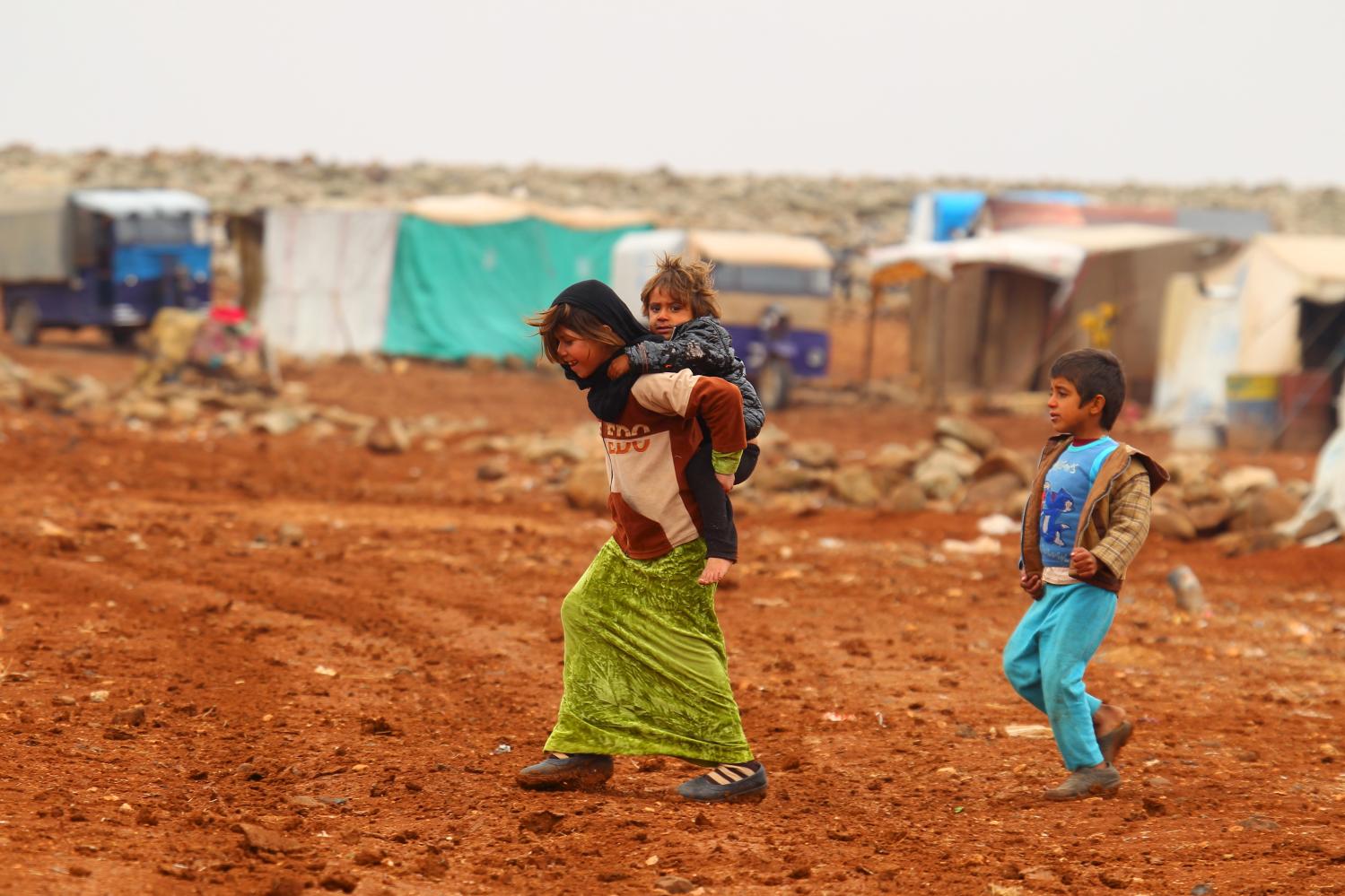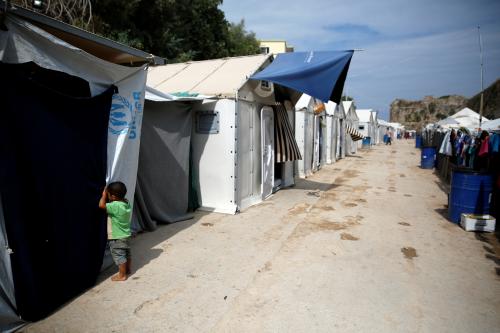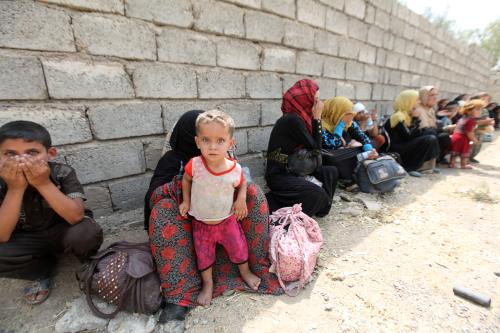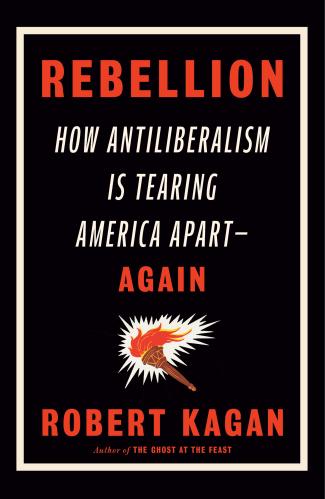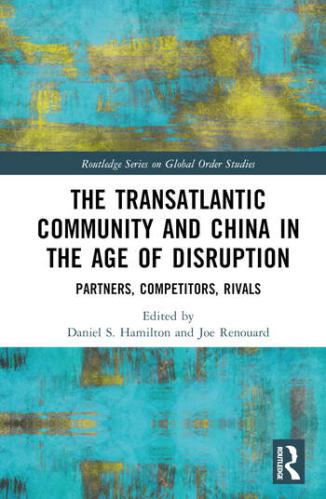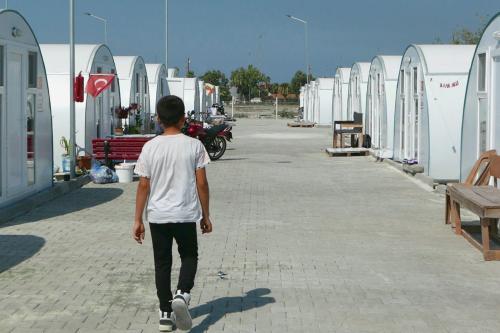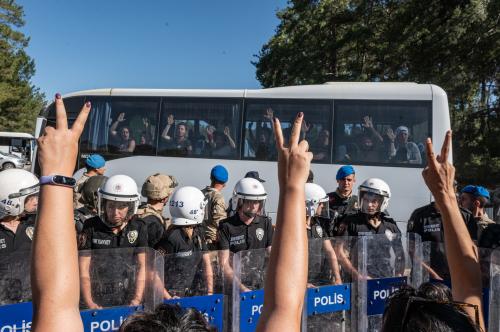The following brief is part of Brookings Big Ideas for America—an institution-wide initiative in which Brookings scholars have identified the biggest issues facing the country and provide ideas for how to address them. (Updated January 24, 2017)
 President-elect Trump is soon to inherit the Syria conflict, an enormous engine of suffering that has taken the lives of nearly 500,000 people1 and displaced more than 10 million, nearly half of Syria’s prewar population.2 Today, 13.5 million are in need of humanitarian assistance within Syria, of which more than 6 million are internally displaced. Nearly 5 million more have sought refuge in neighboring countries.3
President-elect Trump is soon to inherit the Syria conflict, an enormous engine of suffering that has taken the lives of nearly 500,000 people1 and displaced more than 10 million, nearly half of Syria’s prewar population.2 Today, 13.5 million are in need of humanitarian assistance within Syria, of which more than 6 million are internally displaced. Nearly 5 million more have sought refuge in neighboring countries.3
Resolving the conflict will be Mr. Trump’s most daunting foreign policy task. Under President Obama, Washington’s Syria policy was almost singularly focused on defeating the Islamic State, an approach that allowed the conflict to fester, and thereby contribute to one of the worst humanitarian crises of our time.
As the Trump administration begins to formulate a Syria policy, the nearly 5 million Syrian refugees in neighboring countries—who represent nearly one-quarter of Syria’s population before the civil war—should not be overlooked.4 The sheer scale of the refugee crisis poses unparalleled humanitarian, economic, and political challenges in an already fragile region. Turkey hosts more than 2.8 million refugees from Syria, more than any other country in the world and more than half the refugee population in the region. Lebanon hosts more than 1 million refugees, which amounts to more than one in five people in the country. In Jordan, that number is one in ten at least.
The sheer scale of the refugee crisis poses unparalleled humanitarian, economic, and political challenges in an already fragile region.
Despite the high-level attention paid to the tremendous scale of need at a series of global conferences this year, substantial resource gaps remain. Those resource gaps have consequences. The United Nations High Commissioner for Refugees (UNHCR) and the World Food Program, both of which are critical to aid delivery in frontline states, face funding shortfalls that have resulted in housing and food insecurity. This lack of institutional support, coupled with deepening poverty and hurdles to legal residency, led hundreds of thousands of refugees to make their way to Europe, often at great personal risk. In their wake, politics on the continent have been reshaped, largely in ways that strain the transatlantic relationship (for example, Brexit and the rise of extreme forms of populism). Because of its potential to drive instability that runs counter to American interests, the United States should increase its already substantial contribution to help fill these resource gaps.
This chapter argues that there are steps the next administration should take to address the Syrian refugee crisis that will improve the lives of those in need while advancing American security interests. It presents three policy recommendations that focus on America’s own resettlement program, efforts in the frontline states, and a coordinated international response to the crisis.
Correct the Record and Continue America’s Longstanding Resettlement Program
Since 1975, the United States has taken in more than 3 million refugees from around the world.5 Working with the U.N. Refugee Agency and its implementing partners, the program resettles the most vulnerable refugees whose specific needs cannot be addressed in the country where they have sought protection. Those include single-parent, female-led families; orphans, unaccompanied minors, and adolescents at risk; women and girls at risk; the disabled and infirm; and survivors of torture.6
Since 9/11, the United States has resettled almost 860,000 refugees. Of those, only three individuals have been convicted on terrorism-related charges: all were for plots outside of the United States, and none were successful.7 Every refugee resettled to the United States must complete a multilayered, dynamic vetting process while overseas, which often takes two or more years to complete. It is the most stringent security procedure for an individual entering the country. The chances of being murdered by a refugee-related terrorist attack in the United States has been 1 in 3.4 billion a year.8 This is a fact that the incoming administration needs to convey to the American public.
Just as the threat of Syrian refugees has been overstated in public discourse, so too has the number of Syrian refugees being resettled in the United States. This past presidential cycle, candidates routinely and incorrectly suggested that America risked being “flooded by Syrian refugees.” Yet since the Syrian uprising began in 2011, the United States has resettled a fraction of the nearly 5 million Syrians in need—only 10,000 to date.9 The overwhelming majority will not have the opportunity for resettlement in Western countries. Less than 1 percent of the world’s 21 million refugees will be resettled. However, the resettlement of even this small number of refugees is important. First, it provides a pathway out of frontline states for those who are particularly vulnerable and cannot safely be accommodated there. Second, resettling refugees has a symbolic importance. It demonstrates solidarity within the transatlantic relationship and makes it clear that the United States supports rights and refuge for all. Third, the United States will not be able to encourage other countries to step up their efforts if it does not shoulder its share of responsibility. For these reasons, the United States should neither pause nor discontinue its refugee resettlement program but instead reaffirm its commitment to it. The next administration should maintain course on America’s commitment to resettle 110,000 refugees in fiscal year 2017 (a 30 percent increase from 2016).
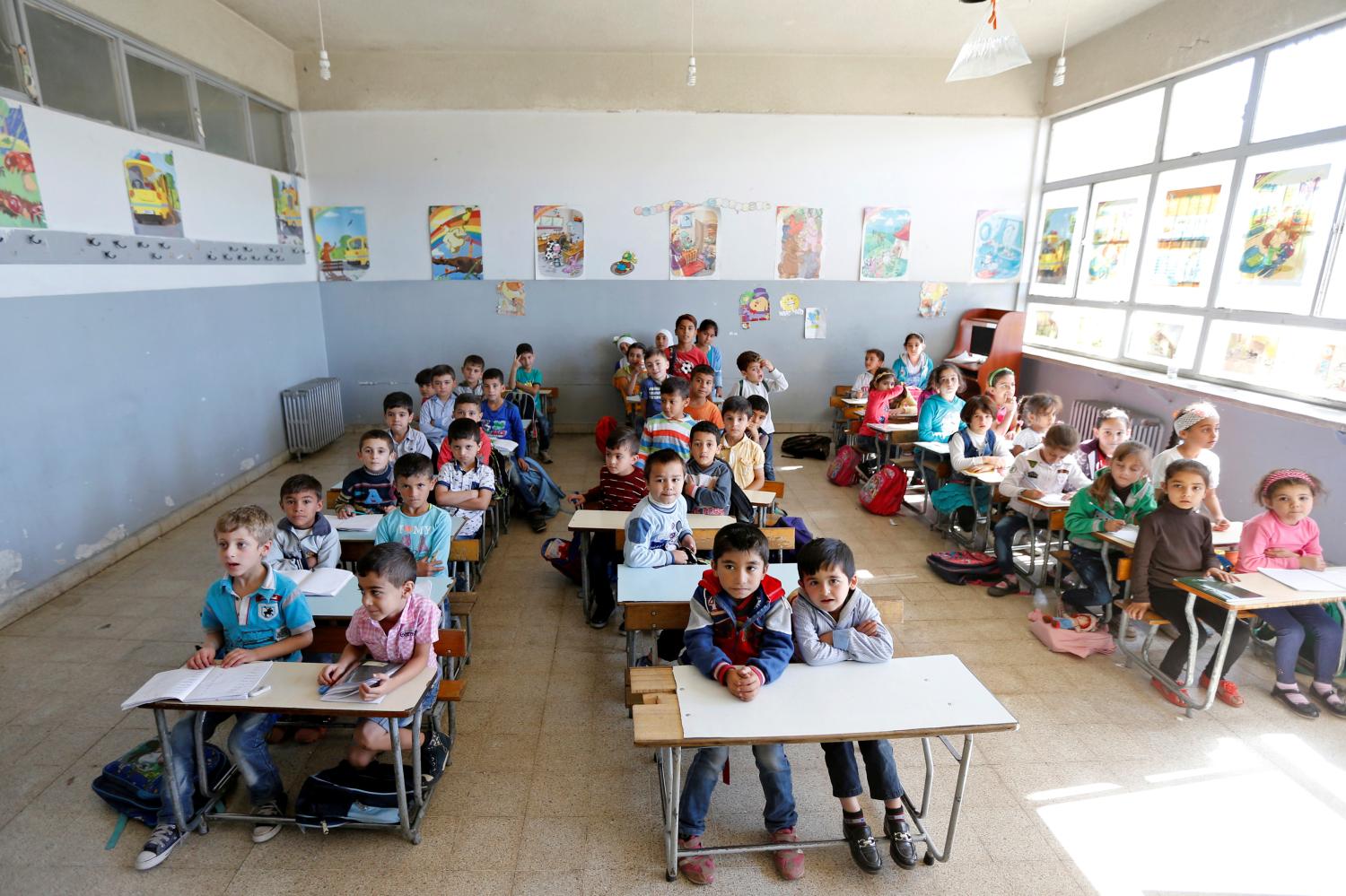
Focus on Education and Labor Markets in Frontline States
Five years into Syria’s civil war, the international community has come to recognize that refugees will not be returning home any time soon. The average length of major protracted refugee situations is 26 years.10 The resources and infrastructure of Lebanon, Jordan, and Turkey have been strained by the crisis, which was a contributing factor to large-scale, irregular migration to Europe in 2015. Therefore, for political reasons as well as humanitarian ones, advancing the well-being of the displaced where they are is imperative. The key to doing so is better access to education and employment.
Increase access to education for refugee children in front-line states
President-elect Trump should make Syrian refugee education a top priority. Before the Syria conflict, 94 percent of children in Syria attended primary and lower secondary education. However, access to education for Syrian refugees is limited and uneven in Lebanon, Jordan, and Turkey. Mr. Trump should challenge the international community to work with and support frontline states to set a bold agenda to ensure that every Syrian refugee child has access to primary and secondary education by September 2017. The international community must ensure that these efforts to support refugee children do not overlook or come at the detriment of the needs of children in host communities.
The returns on investing in Syrian refugee education are enormous, far reaching, and long lasting. Schools and classrooms provide an environment for refugee children to learn from and about one another, strengthen interpersonal skills, develop resilience, and build conflict resolution skills. When children are unable to attend school, they have difficulty integrating into their host societies and are likely to be a greater burden on the host country’s economy in the future. In the immediate term, Syrian school-aged refugees need psychosocial support because many of them have experienced tremendous suffering. They should be in learning environments where they can develop a sense of peace, belonging, trust, and respect. In the long term, access to high-quality education gives refugees the skills to become valuable and valued contributors to their host communities, as well as to their country of origin when they can return home. By failing to educate refugee children, the international community is not only dashing their hopes and aspirations but also turning a blind eye to potential environments where violent extremism can take hold.
There are several common obstacles to access to education in frontline states, including a lack of funding for public schooling and economic hardship that drives families to send children to work instead of the classroom. In the case of Turkey, there is also a language barrier. The only way to overcome these obstacles is for the next administration to challenge the international community, host governments, and implementing partners to act.
Encourage and resource education reform in Lebanon
In Lebanon, the education system has struggled to keep up with demand, and nearly 250,000 Syrian children—half of the Syrian school-aged children there—are out of school. The sheer number of Syrian children has required the Education Ministry to introduce two-shift school days in the public education system. The first shift is for Lebanese students and is open for Syrian students if there is space. The second shift, starting between 2:00 and 2:30 p.m., is only for Syrian children. To improve the situation, Lebanon will need to embrace major reforms to strengthen public education and receive donor funding earmarked for this purpose. The responsibility of hosting so many refugees has cost Lebanon over $13 billion, and stretched the government’s capacity on virtually every single public good.
Increase political and financial support for Turkish language instruction in Turkey
To its credit, Turkey has lifted legal barriers for Syrian refugees to access education. However, language is an obstacle for many Syrian children, who are primarily Arabic speaking, and most instructors do not have the ability to teach Turkish as a second language. They will need special training.
Economic hardship is the primary reason most Syrian school-aged children are out of school, and it is forcing many refugee children into employment to provide for their families. Of the nearly 5 million Syrian refugees, 35 percent are children and 900,000 are out of school.11 In Jordan, 84 percent of employers employ Syrian refugee children.12 In Iraq, 77 percent of Syrian children are supporting their families.13 In Lebanon and Turkey, girls and boys as young as six years of age are working to help make ends meet. Under these conditions, refugee children are extremely vulnerable to multiple forms of exploitation and abuse, and an entire generation is at risk of missing out on an education. Getting Syrian school-aged children into classrooms will require that their parents be allowed to work, making families less dependent on children’s labor.
Expand access to employment opportunities in front-line states
Opening labor markets to refugees is a politically sensitive matter. The United States, together with the international community, has a role to play in encouraging countries to take steps in that direction and supporting them when they do.
Partner with the private sector
Washington could employ a range of incentives to encourage companies to make measurable commitments that would expand labor market integration, especially in communities on the frontlines of the crisis. These incentives could include ensuring that refugees have access to financial services, even if they do not have a place of permanent residence; enabling refugees to access seed funding to start new businesses, and where necessary providing them with the technical assistance to do so; and procuring goods and services from businesses that hire refugees.
Increase financial support for Jordan’s refugee response plan
In response to the Syrian refugee crisis, the government of Jordan recently produced a three-year plan that promotes a resilience-based approach.14 To the extent that such an approach is sustainable and can offer benefits to host communities as well as refugees, it is an important mechanism for ensuring stability. Although the international community has supported the plan, only $1 billion (37.5 percent) of the $2.7 billion required to fund it for 2016 has yet been raised. As Michael Ignatieff and a team of researchers pointed out in a paper they wrote for Brookings earlier in 2016, the success of the plan depends on the extent to which it is supported.14
Jordan has indicated that it could generate 200,000 jobs suitable for Syrian refugees, including 150,000 jobs in a set of five new industrial zones and 50,000 jobs in labor-intensive infrastructure projects. That number could rise with additional support from the international community, in particular for the development zones. Earlier this year, the European Union granted trade concessions that allow goods produced there to be sold on European markets free of taxes and quotas, provided that the manufacturer’s workforce is at least 15 percent Syrian. The United States, which has its own trade agreement with Jordan, should encourage other countries to follow suit.
Encourage Turkey to further open its labor market
Turkey hosts more than 2.8 million refugees from Syria, more than any other country in the world and more than half of the refugee population in the region. In January, Turkey opened up its labor market, passing legislation that allows registered Syrian refugees who have been in the country for at least six months to apply for work permits in the province where they first registered. Under the new law, employers are required to pay permit holders minimum wage. Given the extent to which many Syrians in Turkey work illegally, for low wages, and sometimes under exploitative conditions, the measure is an important one.
However, it is not clear that the new law goes far enough. First, it does not automatically give refugees a path out of the black market; most notably, it requires an employer to give his or her employee a work contract before the employee can apply for a permit. Employers who have benefitted from the exploitation of refugees are unlikely to offer these contracts. Perhaps for that reason, very few permits have yet been issued. Second, the law does not apply to all Syrians. To be eligible, would-be permit holders must have held a Turkish identification card for at least six months. These cards are not always easy for refugees to procure.15
Washington can use financial commitments to incentivize Erdoğan’s government to expand the pathway to legal work. This approach will be harder to make in the wake of the attempted coup in Turkey in July 2016, which led to a series of crackdowns that have introduced substantial uncertainty in the relationship between Ankara and Washington. However, it is an effort worth making.
Collaborate with Nongovernmental Organizations and Foster Collaboration among Them
Across each of these initiatives, collaboration between government and civil society organizations, as well as among civil society organizations themselves, has the potential to contribute substantially to success. Faith-based organizations and diaspora groups have an important role to play in providing on-the-ground services to those in need. So too do refugee advocates. Washington-based think tanks should work with organizations like the International Rescue Committee and smaller outfits doing refugee-specific work, helping to leverage their impact.
Providing assistance to refugees fleeing the violence in Syria will require substantial financial and political investment. But the costs of doing otherwise are much higher.
Conclusion
Providing assistance to refugees fleeing the violence in Syria will require substantial financial and political investment. But the costs of doing otherwise are much higher. Scaling back America’s commitment to those in search of safety would reverberate within the transatlantic alliance, strengthen the forces of nationalism and populism breeding disunity within Europe, deny a needed form of support to fragile states in the Middle East that are already struggling to cope with the crisis, and make the United States a bystander in a catastrophe that cries out for leadership.
For these reasons, the next administration should continue America’s long-standing refugee resettlement program while providing additional support to Syrian refugees in frontline states. It is also important that Mr. Trump build and lead a global coalition of countries to advance the needs of Syrian refugees and the communities that host them—only then can the pressure on fragile states in the Middle East and America’s allies in Europe be relieved. Both are strained by the weight of the crisis, and both are critical to America’s security interests. If the next administration is to take such concerns seriously and make Syrian refugees more than a political slogan, Mr. Trump must challenge the international community to take action. It can only do so if America takes action itself.
-
Footnotes
- Priyanka Boghani, “A Staggering New Death Toll for Syria’s War –470,000,” PBS Frontline, February 11, 2016, www.pbs.org/wgbh/frontline/article/a-staggering-new-death-toll-for-syrias-war-470000/.
- Mark Bixler and Michael Martinez, “War Forced Half of All Syrians from Home. Here’s Where They Went,” CNN, April 18, 2016, www.cnn.com/2015/09/11/world/syria-refugee-crisis-when-war-displaces-half-a-country/.
- “Figures at a Glance,” Global Trends 2015 Statistical Yearbooks.
- “Syria Complex Emergency – Fact Sheet #5,” U.S. Agency for International Development, September 30, 2016, www.usaid.gov/crisis/syria/fy16/fs05.
- Ruth Igielnik, “Where Refugees to the U.S. Come From,” Pew Research Center, June 17, 2016, www.pewresearch.org/fact-tank/2016/06/17/where-refugees-to-the-u-s-come-from/.
- “Information on UNHCR Resettlement in the United States,” UNHCR, n.d., www.unhcr.org/en-us/information-on-unhcr-resettlement.html.
- Alex Nowrasteh, “Syrian Refugees Don’t Pose a Serious Security Threat,” Cato Institute, November 18, 2015, www.cato.org/blog/syrian-refugees-dont-pose-serious-security-threat.
- Alex Nowrasteh, “The Terrorism Risk of Asylum-Seekers and Refugees: The Minnesota, New York, and New Jersey Terrorist Attacks,” Cato Institute, September 20, 2016, www.cato.org/blog/terrorism-risk-asylum-seekers-refugees-minnesota-new-york-new-jersey-terrorist-attacks.
- Washington Post Editorial Board, “America Has Accepted 10,000 Syrian Refugees. That’s Still Too Few,” Washington Post, September 2016.
- Bureau of Population, Refugees, and Migration, “Protracted Refugee Situations,” U.S. Department of State, n.d., www.state.gov/j/prm/policyissues/issues/protracted/.
- “UNHCR Reports Crisis in Refugee Education,” UNHCR, September 15, 2016, www.unhcr.org/en-us/news/press/2016/9/57d7d6f34/unhcr-reports-crisis-refugee-education.html.
- “Economic Impacts of Syrian Refugees: Existing Research Review & Key Takeaways,” Policy Brief no. 1 (International Rescue Committee, January 2016), www.rescue.org/sites/default/files/document/465/ircpolicybriefeconomicimpactsofsyrianrefugees.pdf.
- “Small Hands, Heavy Burden: How the Syria Conflict is Driving More Children into the Workforce,” Save the Children, July 2, 2015, http://childrenofsyria.info/wp-content/uploads/2015/07/CHILD-LABOUR.pdf.
- Michael Ignatieff, Juliette Keeley, Betsy Ribble, and Keith McCammon, “The Refugee and Migration Crisis: Proposals for Action, U.N. Summit 2016,” Brookings, September 12, 2016.
- Patrick Kingsley, “Fewer than 0.1% of Syrians in Turkey in Line for Work Permits,” The Guardian, April 11, 2016, www.theguardian.com/world/2016/apr/11/fewer-than-01-of-syrians-in-turkey-in-line-for-work-permits.


